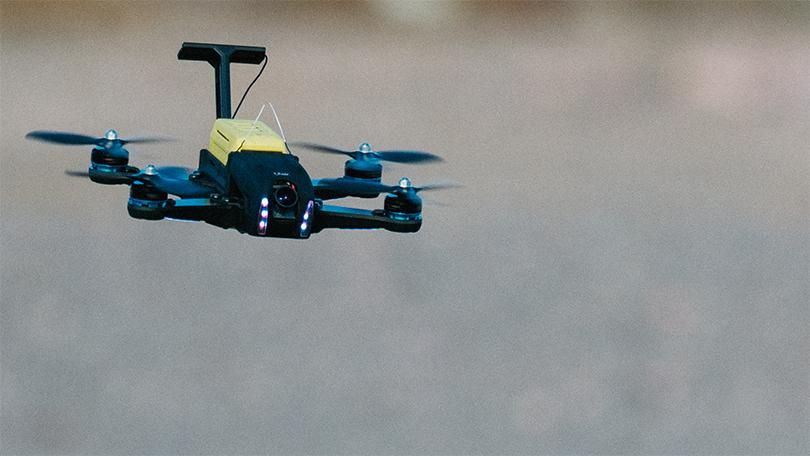You can fly this drone with hand gestures.
Category: drones – Page 149


Court Strikes Down FAA’s Drone Registration Rule
Despite its Big Brother-ish nature, the rule was ostensibly enacted to improve safety as more and more drones take to the air. In his decision, Judge Kavanaugh noted that although the rule is unlawful, “aviation safety is obviously an important goal, and the Registration Rule may well help further that goal to some degree.”
The FAA said on Friday that it is reviewing the court decision, but did not immediately announce whether it would appeal.
“The FAA put registration and operational regulations in place to ensure that drones are operated in a way that is safe and does not pose security and privacy threats,” the agency said in a statement. “We are in the process of considering our options and response to the decision.”

Riding high: Toyota eyes ‘flying car’ future
Toyota has its sights set on a Blade Runner future as the Japanese automaker backs a move to launch a flying car in time for the Tokyo 2020 Olympics.
The company is giving about 42.5 million yen ($375,000) to the Cartivator project, which is developing the three-wheeled sci-fi car that relies on drone technology to take flight.
The manned vehicle, dubbed SkyDrive, will have four sets of propellors and — at 2.9 metres (9.5 foot) long and 1.3 metres wide — is aiming to be the world’s smallest flying car, according to the project.

2 Comments on “Neurala Announces Lifelong-DNN for Self-Driving Cars, Drones, Toys and Other Machines: Deep Learning That Can Learn on the Device Without Using the Cloud”
Neurala today announced a major advance in deep learning with software that can learn with or without the cloud and eliminates the risk of forgetting its previous knowledge…
Lifelong-DNN™ (Lifelong-Deep Neural Networks), Neurala’s Patent-Pending Software, Overcomes Catastrophic Forgetting—the #1 Problem Limiting the Growth of Deep Learning Neural Networks for Real-Time Use
SAN JOSE, CA —May 8, 2017— Neurala today announced a major advance in deep learning with software that can learn with or without the cloud and eliminates the risk of forgetting its previous knowledge. The new patent-pending approach means that for the first time a self-driving car can be personalized by each owner or dealer to a specific neighborhood; a parent can teach a toy to recognize a child, without infringing on privacy; and industrial machines can be updated in the field for specific tasks.
Until now, if an AI system had learned a certain number of objects and needed to learn one more, it would have to be retrained on all of the objects. This traditional method requires using powerful servers that are often located in the cloud. Neurala Lifelong Deep Neural Networks (L-DNN) enable learning of the incremental object on the edge.
Hands-free farming: Autonomous tractors and drones grow cereal crops
Future of farming? Driverless tractors and drones attempt to grow crops without humans setting foot on the land in a world first…
Drones are also being used to monitor the crops so agronomists don’t have to enter the field to carry out their observations.
The team from the Harper Adams University in Shropshire believe their research will revolutionise farming and free up the time of farmers.
Johnathan Gill, Kit Franklin and Martin Abell are using small-scale machinery that is already available on the market including a 38bhp Iseki TLE 3400 compact tractor and adapting these in the university’s engineering labs.
On board a racing drone for a tour of the CERN Data Centre
Watch footage from when world champion drone pilot Chad Novak took off in CERN Data Centre.
Video produced by: CERN Video Productions
Director: Mike Struik
Camera: Chad Nowak
Copyright © 2017 Terms of use: http://copyright.web.ch/
World’s First Spherical Display Drone
Worlds first spherical display drone.
This is coolest looking thing I’ve seen today! ![]() 😲.
😲.
US Marines could use robots with machine guns to lead beach invasions
The US Marines could one day use amphibious tanks and robots with machine guns to storm beaches.
Researchers are quietly testing around 50 weaponised robots at the Navy’s Camp Pendleton base in California.
Using high-tech drones and weaponised robots on the front line could help protect the lives of soldiers, the US Navy said.

Artificial intelligence and drones ‘future of policing’
Artificial intelligence and drones will be key policing tools in the future amid budget and job cuts, Gwent Police’s chief constable has said.
Jeff Farrar said he foresees every police vehicle carrying a drone in the years to come and for more computers to do jobs “that do not involve emotion”.
Gwent has had £50m of funding cuts and still needs to make £9m of savings. It has also lost 300 officers since 2011.